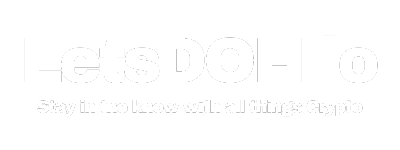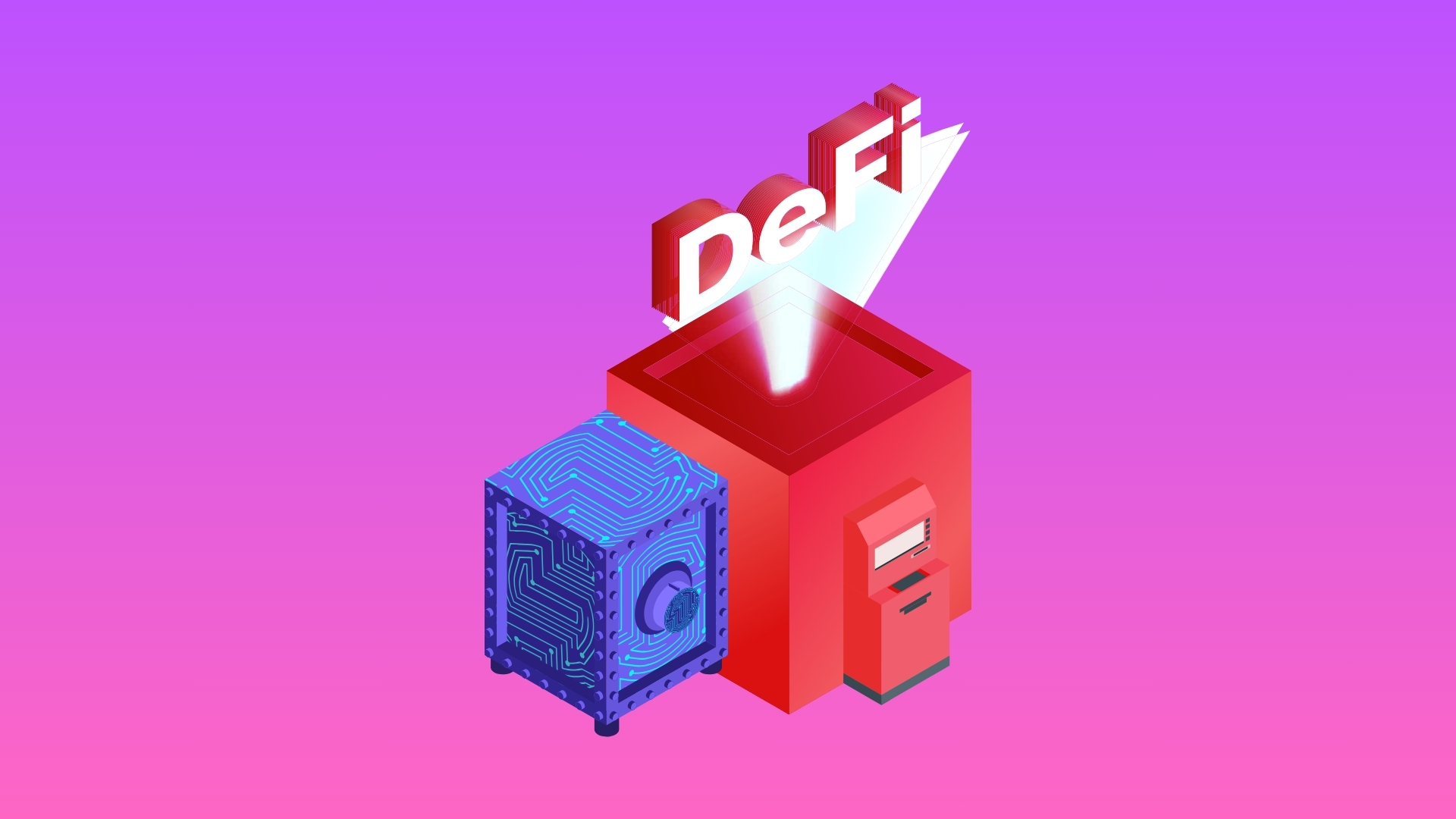What is Decentralized Finance (DeFi)?
Jump to section
A Beginner’s Guide to Decentralized Finance 
Decentralized finance, or DeFi, has rapidly emerged as a vital sector in the crypto economy. By combining smart contracts with a variety of decentralized applications (dApps), DeFi has revolutionized financial services, enabling them to operate autonomously without the need for trusted intermediaries.
Just a few years after the Bitcoin white paper showcased the viability of blockchain technology, DeFi protocols have profoundly impacted the financial services industry. Crypto holders now use DeFi protocols to generate additional yields on their assets. Unbanked citizens in developing countries access crucial services such as loans and insurance through DeFi.
Even if you understand the importance of cryptocurrency, you might still wonder how these DeFi protocols work. Let’s dive in.
The Main Components of DeFi
DeFi consists of the following components:
- Blockchain technology
- Smart contracts
- Decentralized applications (dApps)
Blockchain Technology
DeFi relies heavily on blockchain technology, a decentralized and immutable digital ledger that records all transactions and smart contract data across a network. Blockchains like Ethereum and Solana play crucial roles in these financial services due to their ability to support smart contracts.
Want to learn more about blockchains? Check out our article: What is blockchain technology?
Smart Contracts
Smart contracts are the backbone of DeFi. These self-executing programs automate and transparently execute agreements without intermediaries. Developers can write and deploy these programs on a smart contract-supported blockchain such as Solana or Polkadot. Once added, the parameters of the smart contracts become unchangeable and perform strictly based on their preset rules.
Want to learn more about smart contracts? Check out our article: What are smart contracts?
Decentralized Applications (dApps)
Developers implement DeFi projects through decentralized applications or dApps. These applications interact with the underlying blockchain to provide various financial services such as lending, borrowing, trading, and more. DApps enable users to access all types of services (including DeFi) from anywhere in the world with an internet connection, without needing to hand over personal information or place trust in a centralized entity.
Types of DeFi Platforms
Decentralized Lending and Borrowing
DeFi platforms allow users to lend their digital assets and earn interest while enabling others to borrow these assets. Smart contracts automatically determine interest rates and handle collateralization. Borrowers pledge collateral, and the smart contract holds it until the loan is repaid.
Examples of lending and borrowing platforms include:
- Compound (COMP)
- MakerDAO (MKR)
- Aave (AAVE)
Decentralized Exchanges (DEXs)
While centralized exchanges are often the most efficient way to trade crypto, many feel this is contrary to the basic crypto idea of “decentralization.” DeFi addresses these issues through decentralized exchanges or DEXs. These exchanges allow users to trade digital currencies directly from their crypto wallets without a centralized party to connect buyers and sellers. Instead, DEXs use smart contracts to execute trades, provide transparency, and ensure security.
Examples of DEX platforms include:
- Uniswap (UNI)
- SushiSwap (SUSHI)
- Curve (CRV)
- Balancer (BAL)
Decentralized Stablecoins
Stablecoins are cryptocurrencies designed to maintain price stability with a stable asset, such as the US dollar. DeFi platforms leverage stablecoins to provide more stability in transactions and lending/borrowing activities. Collateral or algorithmic mechanisms often back these stablecoins to maintain the value of the asset they are meant to track.
Examples of decentralized stablecoin projects include:
- Dai (DAI)
- Ampleforth (AMPL)
- GHO (GHO)
- Frax (FRAX)
Yield Farming and Liquidity Mining
Yield farming and liquidity mining are popular DeFi practices that incentivize users to provide liquidity to decentralized exchanges or lending platforms. Users contribute their digital assets to liquidity pools and earn rewards in the form of additional tokens or fees for participating in the pool. By leveraging multiple yield-generating protocols simultaneously, crypto holders can maximize their yield potential from a single pair of assets.
Examples of yield farming platforms include:
- SushiSwap (SUSHI)
- yearn.finance (YFI)
- PancakeSwap (CAKE)
Understanding DeFi
At its core, DeFi refers to a set of financial services provided by applications built upon blockchain technology. These services are self-operated and do not rely on intermediaries like banks or traditional financial institutions.
Think of any financial service that currently exists in the traditional financial market, such as loans, mortgages, or insurance products. Now imagine if, instead of insurance brokers and traditional banks acting as gatekeepers to these services, everything was automated based on a transparent set of rules laid out by a computer program.
Developers can build these programs to follow a conditional logic. For example, “if a valid certificate is provided, the smart contract will automatically process a life insurance payout based on the terms already set.”
DeFi leverages the decentralized nature of blockchain networks to provide financial services in a transparent and autonomous manner. Unlike traditional finance, where centralized institutions control and oversee all transactions, DeFi relies on smart contracts to automate processes and enforce agreements.
Using these decentralized platforms, anyone—not just those with exclusive access—can lend or borrow funds. For example, a person in the United States could lend funds to a person in India using DeFi services. To secure the loan, the smart contract may first require the borrower to deposit collateral. If a borrower defaults, the smart contract can automatically liquidate the collateral and fully reimburse the lender. No intermediary needs to be involved in any step of this process.
Facilitating truly peer-to-peer financial services is the true innovation of DeFi.
Pros and Cons of DeFi
Pros
Financial Inclusion: DeFi opens up financial services to individuals who do not have access to traditional banking systems. Anyone with an internet connection and a digital wallet can participate in DeFi, democratizing access to financial products and services globally.
Enhanced Transparency: Nodes record all DeFi transactions and activities on the blockchain, providing transparent and immutable records that anyone can audit.
Permissionless: Traditional financial services often require extensive documentation and approval processes. DeFi removes these barriers by allowing anyone to participate without needing permission or facing discrimination.
24/7 Accessibility: DeFi platforms operate 24/7 without any downtime, enabling users from different time zones to access financial services at their convenience.
Cons
Smart Contract Exploits: Smart contracts can be vulnerable to exploits, leading to significant financial losses and disruptions within the ecosystem. Security breaches, hacks, and bugs in the code can pose serious risks.
Complexity and Technical Barriers: DeFi platforms often require users to have technical knowledge and familiarity with blockchain technology. Setting up wallets, interacting with smart contracts, and managing private keys can be challenging for those not well-versed in these concepts.
Volatility and Price Risks: DeFi tokens and assets are subject to extreme price volatility. Many DeFi projects issue their own tokens, which can experience rapid price fluctuations due to speculative trading, liquidity imbalances, and market sentiment.
Impermanent Loss: Impermanent loss occurs when the prices of the two tokens in a liquidity pool diverge significantly over time. This can cause the value of the tokens provided to the pool to become imbalanced, leading to potential financial losses for liquidity providers.
Rug Pulls: A “rug pull” is a type of scam in the DeFi space where the creators of a project abruptly pull out liquidity or funds, leaving participants with worthless or significantly devalued tokens. This fraudulent activity exploits the speculative and decentralized nature of DeFi.
In conclusion, DeFi represents a revolutionary shift in the financial landscape, offering innovative solutions and democratizing access to financial services. By understanding its components, advantages, and risks, you can better navigate the world of decentralized finance and leverage its potential to your advantage.

